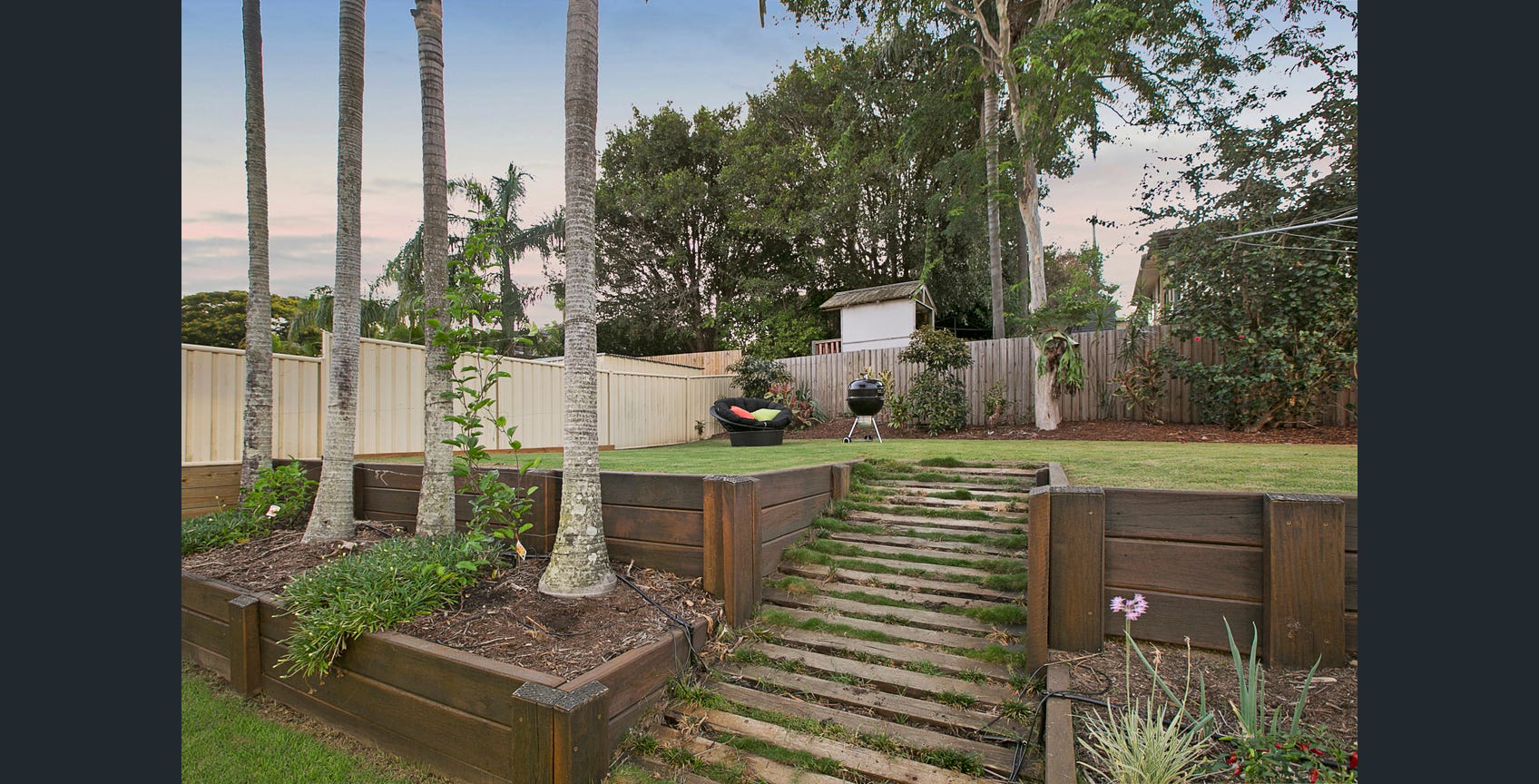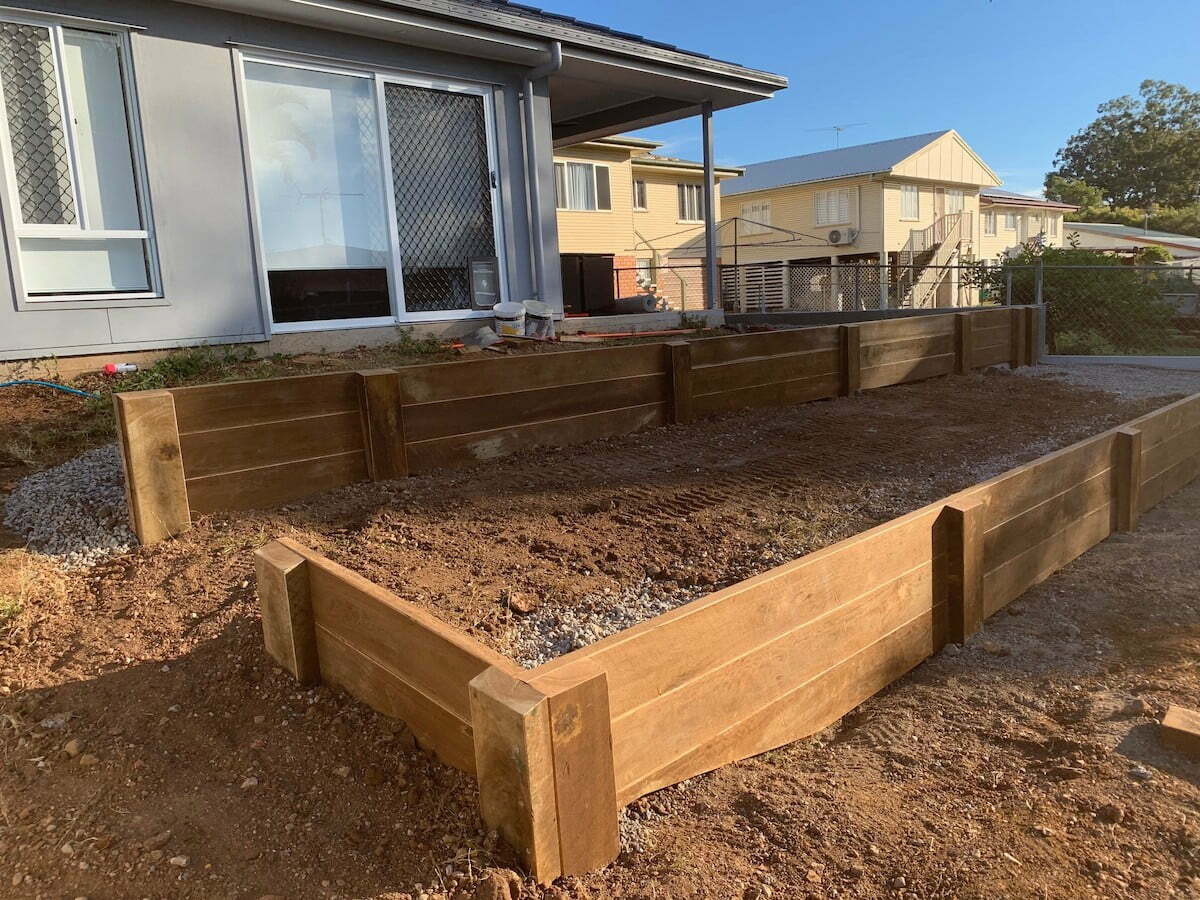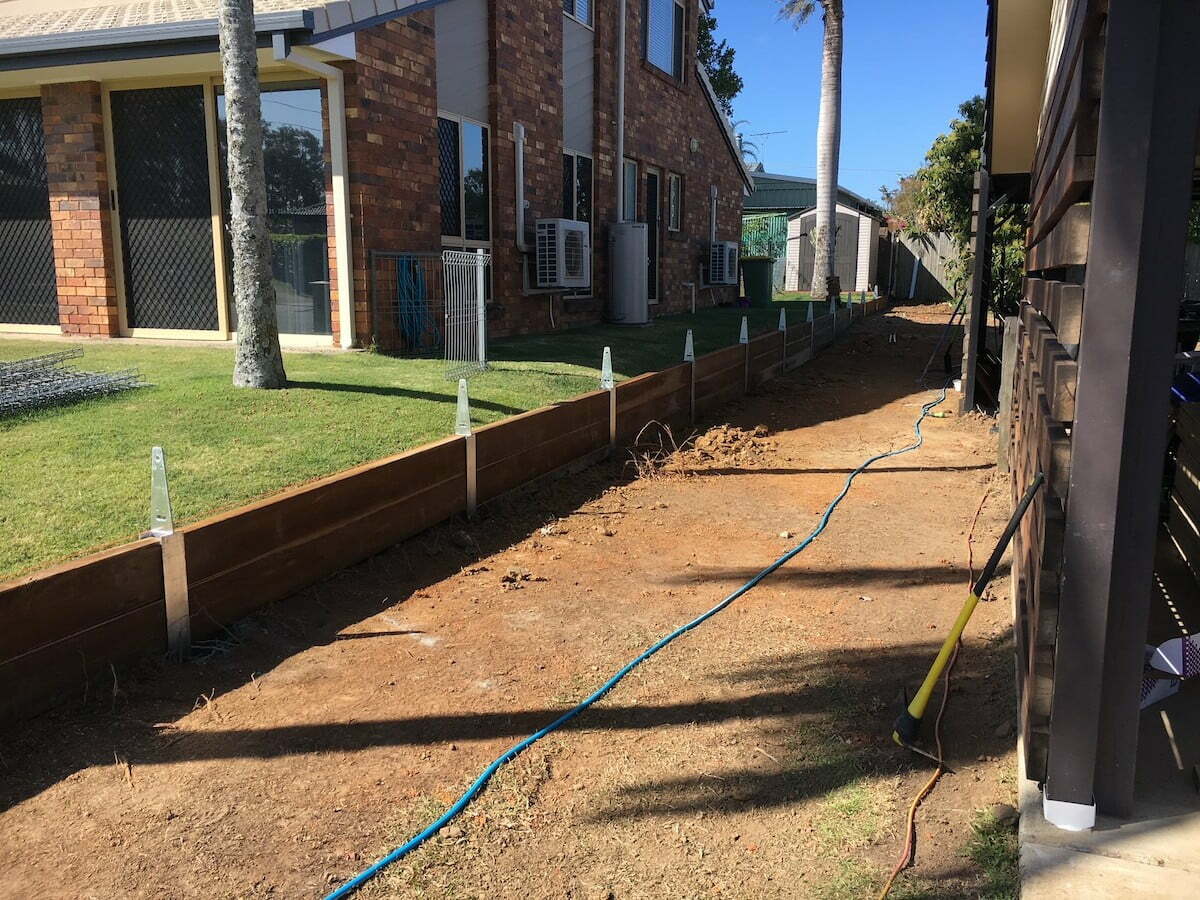Timber retaining walls have been a statement for structural landscapers and home gardeners for decades. Timber is sourced from responsible logging sites and renewable growth forests. Not only is your sleeper wall is going to look great, but it’s working towards a more sustainable future.
Timber sleepers are treated to a hazard level of H4 and are suitable for in ground contact use. The use of a treatment will deter pests and prevent natural decay for years to come. Drainage and silt protection is also a must, this will prevent wet rot caused by water sitting behind the retaining wall. It is vital to install adequate drainage behind any retaining wall to aid in the dispersion of water; this can be achieved with a weed mat being fixed to the back side of the retaining wall. Drainage placed behind the wall should be 10-20mm clean, dirt-free drainage aggregate such as river stones or coarse crushed rock. Encasing the drainage material with a Geo Cloth will help prevent any finer materials getting through. Sleeper walls can be installed by homeowners if a few rules are adhered to.
A retaining wall is a ‘class 10b’ (non-habitable) structure under the Building Code of Australia (forming volumes one and two of the National Construction Code).
Queensland building regulations advise you will not need building approval for a retaining wall if:
- there is no ‘surcharge loading’ over the ‘zone of influence’ for the wall (refer to definitions in the Building Regulation 2006 (Schedule 1 Section 3))
- the total height of the wall and of the fill or cut retained by the wall is no more than one metre above the wall’s natural ground surface
- the wall is no closer than 1.5 metres to a building or another retaining wall
it does not form part of the fencing for a pool.
It is always best to contact your council as different councils may have different rules and regulations regarding timber sleeper wall construction.








